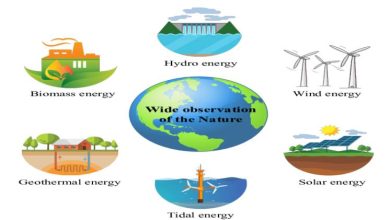China’s Economy: A Dynamic Force in Global Growth and Innovation – Kavan Choksi

China’s economy, renowned for its rapid growth and expansive scale, is one of the most significant forces in the global market today. From its humble beginnings as a predominantly agrarian society, China has transformed into a global manufacturing powerhouse and a hub of technological innovation. This article delves into the various facets of China’s economic rise, explores the challenges it faces today, and discusses its evolving role on the world stage. We now see what pros like Kavan Choksi think.
Historical Context and Economic Transformation
The economic reforms initiated in 1978 under the leadership of Deng Xiaoping marked a pivotal turn in China’s economic fortunes. Moving away from a strictly controlled socialist system, China embraced elements of market economics that spurred investment, trade, and private enterprise. These changes unleashed a period of intense economic growth, pulling millions out of poverty and turning China into the world’s second-largest economy.
Manufacturing and Export Prowess
China’s economy is often synonymous with manufacturing. It has become the world’s factory floor, where everything from electronics to apparel is produced. This manufacturing success is supported by a combination of abundant labor, a growing industrial capacity, and government policies that attract foreign direct investment. The result is a robust export sector that has registered massive trade surpluses, particularly in markets like the United States and Europe.
Shift Towards Services and Consumption
In recent years, China’s economic strategy has shifted towards increasing the role of services and consumption in its economic output. This transition is part of a broader plan to create a more balanced and sustainable economic model, moving away from the earlier heavy reliance on exports and large-scale infrastructure projects. Today, services account for a significant portion of China’s GDP, reflecting changes in domestic consumption patterns and the growing middle class’s lifestyle aspirations.
Technological Innovation and Challenges
China is also making significant strides in technology, driven by substantial investments in research and development and a strategic focus on future industries like renewable energy, electric vehicles, and artificial intelligence. Companies such as Huawei, Alibaba, and Tencent are at the forefront of global innovation in their respective fields. However, this rapid growth in technology sectors has not come without challenges, including concerns about intellectual property rights, data security, and the geopolitical tensions that arise from technology transfer issues.
Economic Challenges and International Relations
Despite its impressive growth, China faces several economic challenges. The transition to a consumption-driven economy is complex and fraught with risks, including rising debt levels, an aging population, and regional disparities in income and development. Additionally, international trade tensions, particularly with the United States, have led to tariffs and other trade barriers that threaten to affect China’s export sectors.
Environmental degradation remains a significant concern, prompting the government to invest heavily in green technologies and sustainable practices. However, balancing economic growth with environmental sustainability continues to be a delicate task.
China’s Role in Global Governance
China’s economic rise has also translated into greater influence in global economic governance. It plays a crucial role in major international bodies such as the World Trade Organization (WTO) and has initiated new institutions like the Asian Infrastructure Investment Bank (AIIB). Moreover, initiatives like the Belt and Road Initiative (BRI) underscore China’s ambition to reshape global trade and economic patterns through infrastructure development across Asia, Africa, and Europe.
Conclusion
China’s economy is a study in contrasts—between rapid modernization and lingering traditional practices, between ambitious global outreach and domestic challenges, and between economic liberalization and state control. As China continues to evolve, its actions will have profound implications not only for its citizens but for the global economy at large. Understanding the nuances of China’s economic landscape is essential for anyone looking to engage with or comprehend the forces shaping our world today.





